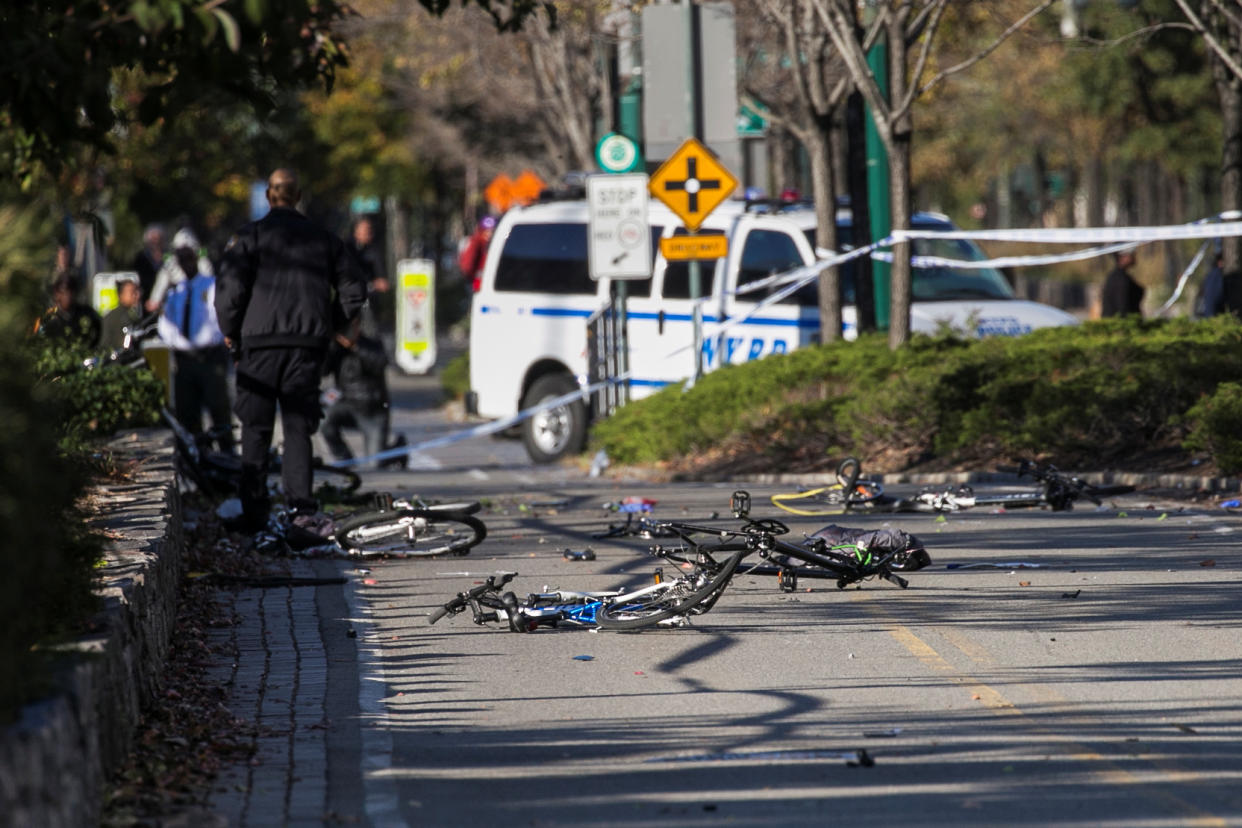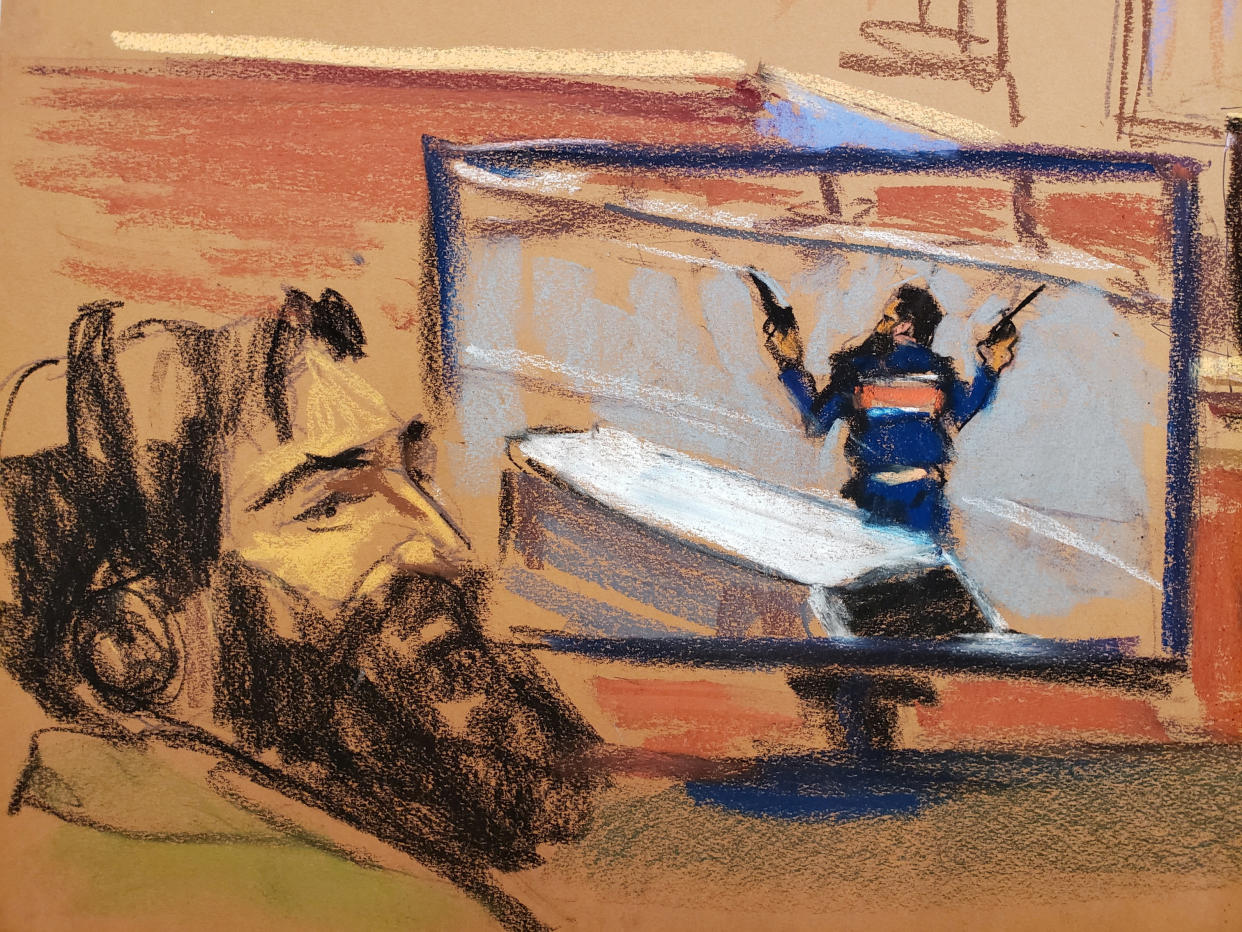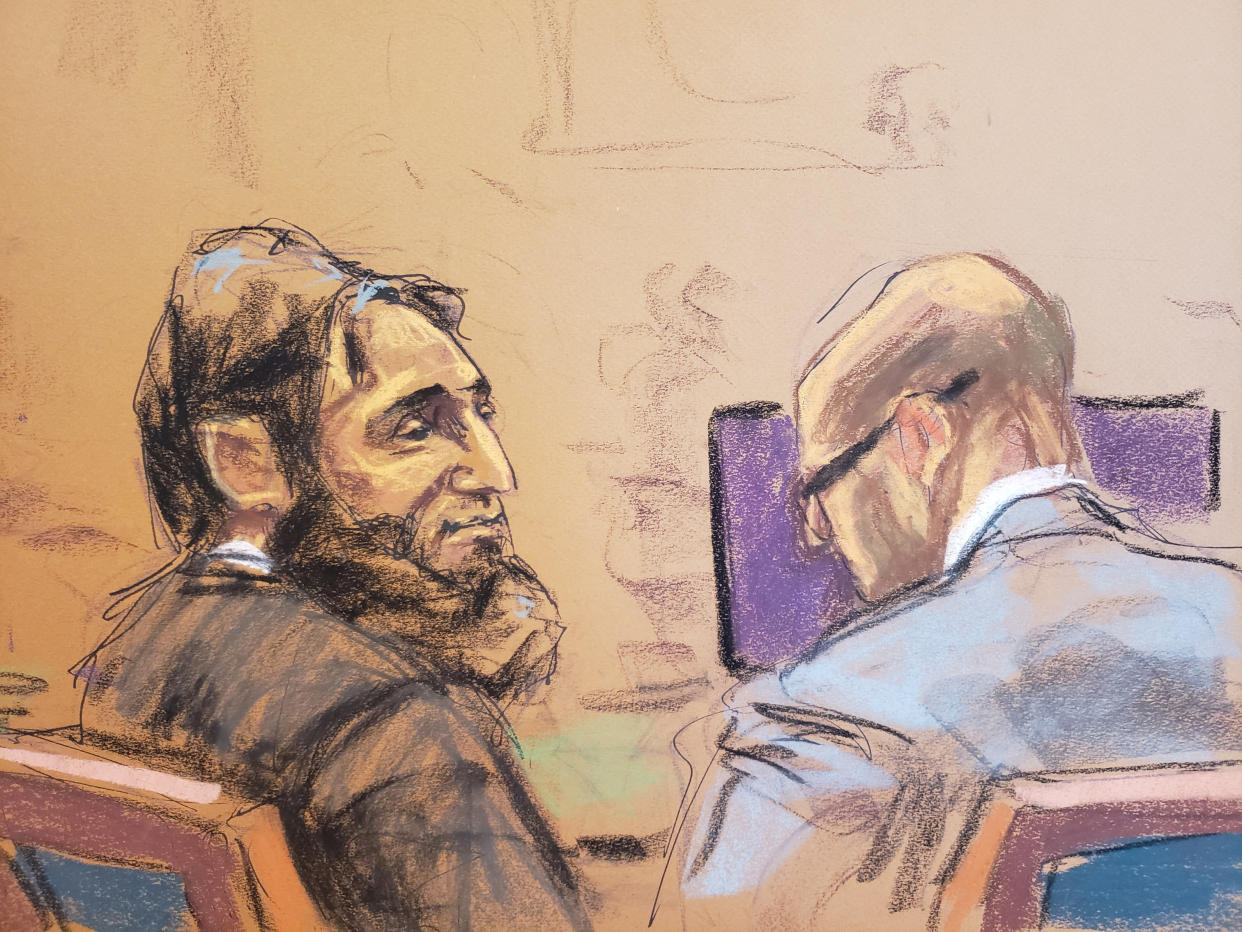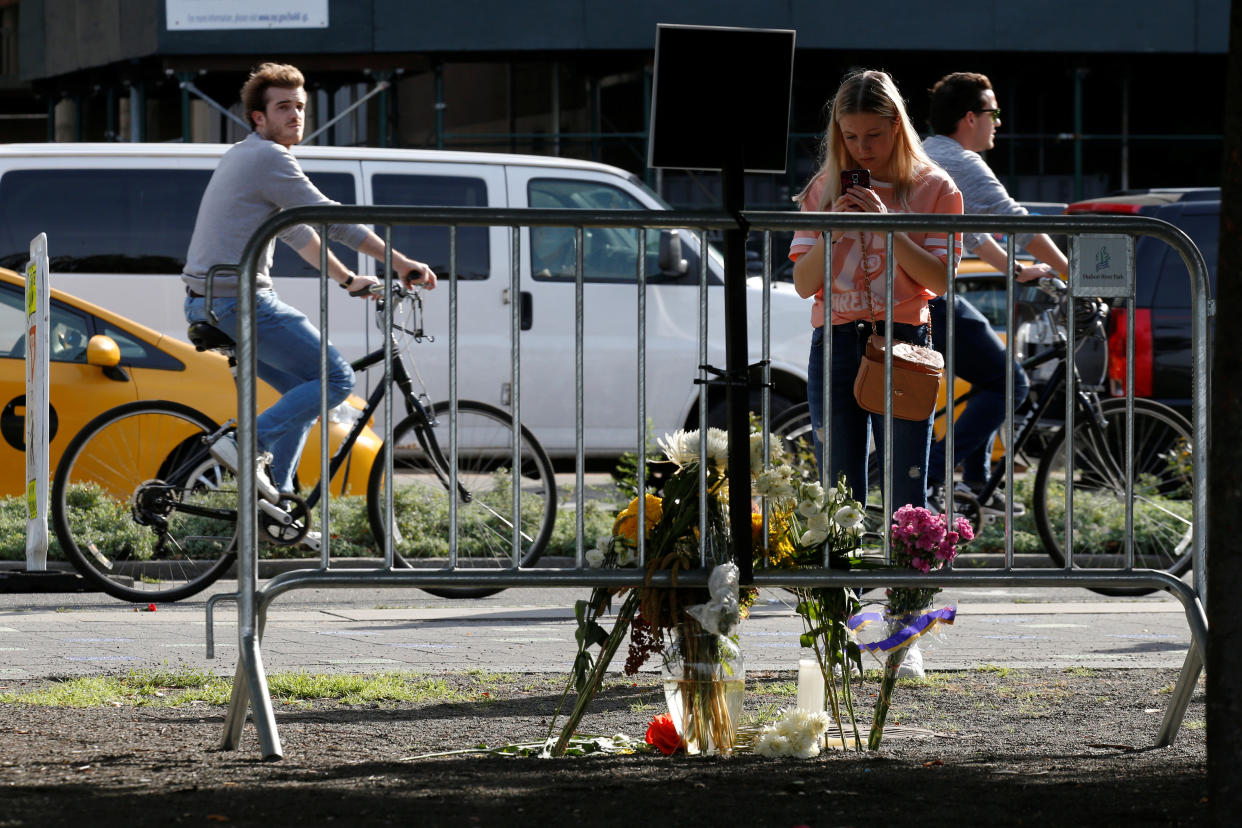NYC bike path terrorist, convicted of killing 8 in 2017, sentenced to life: What we know

The man who killed eight people and injured dozens more with a rented truck on a popular New York City bike path in 2017 was formally sentenced to life in prison Wednesday in a Manhattan federal court.
Sayfullo Saipov, a 35-year-old citizen of Uzbekistan and former New Jersey resident, was convicted in January of carrying out what remains the deadliest terror attack in New York since 9/11.
In March, a jury rejected the death penalty for Saipov, leaving him with a mandatory life sentence.
How did the attack unfold?

According to federal prosecutors, on Oct. 31, 2017, Saipov used a Home Depot truck he rented in New Jersey to mow down people on a bicycle path packed with tourists and residents along the Hudson River on Manhattan's West Side.
Five people from Argentina, two Americans and a Belgian woman were killed, and 18 others were seriously injured in the attack, which prosecutors said Saipov planned for months in the hopes it would help him gain membership in the Islamic State terrorist organization also known as ISIS.
Saipov, a former long-haul truck driver and married father of three young children, drove at speeds as fast as 66 mph as he struck pedestrians on a mile-long stretch of the bike path. He emerged from the truck after ramming into a school bus, shouting “God is great!” in Arabic and waving paintball and pellet guns in the air. He was shot in the abdomen by a police officer and immediately taken into custody.
Authorities found a note left by Saipov near the scene claiming allegiance to ISIS. FBI agents who questioned him in a hospital room after the attack said he smiled and asked if they could hang an Islamic State flag on the wall. He also told them he’d planned to continue on to the Brooklyn Bridge to kill more people.
Prosecutors say that Saipov, a legal permanent U.S. resident, became radicalized by online ISIS propaganda after emigrating from his native Uzbekistan to the United States in 2010.
Shortly after Saipov’s arrest, then-President Donald Trump tweeted that he “SHOULD GET DEATH PENALTY!”
And Trump quickly used the rampage to reignite his push for tighter U.S. immigration laws.
What happened at the trial?

Saipov was the first defendant to face a federal death penalty trial under President Biden, who had campaigned against capital punishment. But Attorney General Merrick Garland still pursued the death penalty, sparking criticism from those who oppose it.
Saipov did not testify at his trial earlier this year, which included testimony from survivors and relatives of people killed in the attack. His public defender, David Patton, did not deny that his client carried out the attack, telling jurors that his actions were “senseless, horrific, and there’s no justification for them.”
“Nobody forced him to do this," Patton said. "He’s guilty of murder and assault among many other crimes — plain and simple.”
But Patton disputed the prosecution's claim that Saipov did so in order to gain entrance to ISIS. Saipov, Patton argued, had merely been “steeped in ISIS propaganda.”
Saipov was found guilty of all 28 counts he faced, including eight counts of murder in aid of racketeering activity — one for each victim killed — and one count of violence and destruction of a motor vehicle causing death.
He was also convicted of 18 counts of attempted murder and one count of providing material support to a terrorist organization, ISIS, which carries a maximum life sentence.
During the penalty phase, the jury was deadlocked on whether Saipov should receive the death penalty.
They agreed Saipov intentionally killed his victims after "substantial planning and premeditation" and did it for ISIS, but they did not unanimously find that he represented a future danger or would likely commit acts of violence while in prison.
Since the death penalty requires a jury to be unanimous, the sentence of life in prison without parole became automatic in the case.
What happened at his sentencing?

More than a dozen people who survived the attack and family members of people who died spoke inside the courtroom before U.S. District Judge Vernon Broderick formally imposed Saipov's.
Most of those who spoke traveled from Argentina and Belgium. Each speaker was given five minutes to address the court.
Saipov then addressed the court for nearly an hour. Speaking through an Uzbek interpreter, he showed no remorse, railing on what he said was the persecution of Muslims around the world.
Judge Broderick then formally imposed a sentence of eight consecutive life sentences — one for each death — and an additional 260 years in prison, which the prosecution had sought.
“The conduct in this case is among the worst if not the worst I have ever seen,” Broderick said, “both in terms of the impact it had on these victims and the sheer unrepentant nature of the defendant.”
What’s next?

After he’s sentenced, Saipov is expected to be transferred to Colorado's Supermax facility, the most secure U.S. federal prison, which also houses Mexican kingpin Joaquín “El Chapo” Guzman, Ted Kaczynski (aka the Unabomber) and Boston Marathon bomber Dzhokhar Tsarnaev.
There, Saipov will spend at least 22 hours a day alone in a cell with a concrete bed for the rest of his life.

